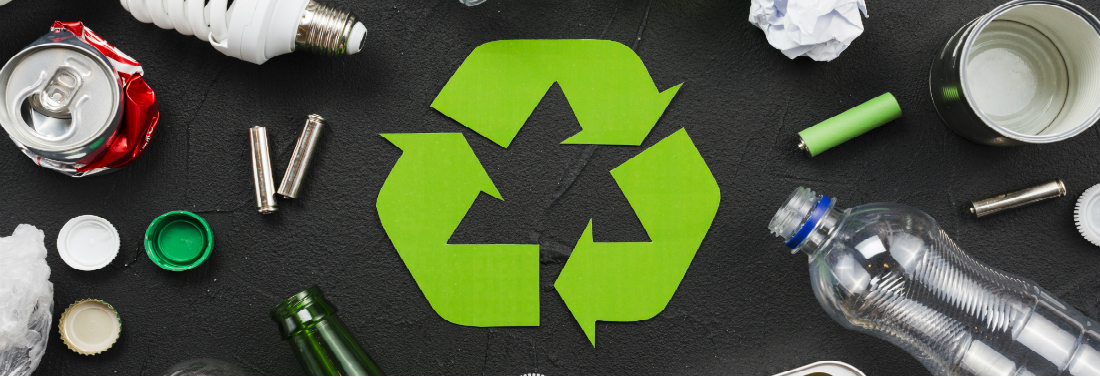A Complete Guide to Zero Waste Living
Global warming, tons of plastic waste causing hopeless loss to our marine life, and ever-growing garbage dumped around the world have pushed more people to an eco-friendly life. There are many profit and nonprofit organisations across the globe that are spending their days and nights to raise awareness amongst masses to convince them to live in a way to leave a better planet for our future generations. Despite the continual emphasis on print, electronic, and social media, we continue producing different waste with each step we take. Throwing plastic cups and bottles while we enjoy partying with friends, plastic forks and cans dumped at beach as we end our picnic and an unlimited number of plastic containers, bags and packing during our shopping. Is there a way we can stop contributing to polluting our planet with our unnecessary waste and start living less harmfully to others and the environment?
The answer is yes. We can start zero waste living, a trend that is growing popular with the advent of toxic side effects of our current lifestyle. Let us first understand what zero waste living is.
What is zero waste living?
This lifestyle is an effort to reduce the amount of trash we produce to a minimum by discarding things that cannot be recycled or reused. The pure goal of this movement is to try and eliminate your household trash to zero. Though it sounds unrealistic, some people have done it and have set the bar for everyone else who wants to follow. Examples are Lauren Singer and Jonathan Levy who not only claimed that they live zero waste life but also documented it. The trend quickly gained popularity and have followers who claimed that their annual waste could fit in a mason jar. It is quite the motivation for anyone who wants to do something to save the world.
Why we need zero waste living?
Well, the stats of plastic pollution are enough to scare anyone willing to believe. We all have seen videos on the internet with dead birds with full of plastic materials on the inside, pregnant whales dying because of swallowing tons of plastic bags, and straws coming out of turtle’s nose. We are ruining skies, land and water all at the same time because of unplanned and inconsiderate lifestyle.
Take a look at these stats!
- The United States is the largest country producing 262 million tons of waste only in the year 2015 according to the Environmental Protection Agency.
- The average individual American resident produces 4.4 pounds of waste per day.
- Annually 2.12 billion tons of waste is being disposed around the world.
- In six months 99 percent of household things end up in a dump.
The stats are enough to give you shivers and draw a very bleak picture of our tomorrow. Luckily we can all create a lifestyle that offers not only a bright tomorrow but also weighs less on your pocket.
How should you start?
This process takes time and a lot of effort so be prepared to be patient and committed.
Step #1: Refuse
Look around your house, and you will notice it is full of plastic goods, which is no good for you or this planet. It is going to be difficult because it will require you to change your habits altogether, be less whimsical, and be more thoughtful all at the same time. Start by changing how you shop, that is the hardest part, but once you overcome this, you will conquer it instantly. The trick is not to buy anything that has wasteful packaging; the next step may be even to refuse accepting it even if you are getting it for free, but we will get there later. Once you stop buying food or any items with non-recyclable plastic packaging eventually more people will follow, and the demand of these kinds of products will decline, and these profit-making companies will be forced to think of other eco-friendly ways to offer their products. This will simplify not only your shopping list but also your life by removing so many unnecessary toxins. Do not be disappointed if you still produce, some daily waste because eliminating waste is impossible; you should do your best but stay grounded in reality will help you achieve more. Initially, even if you reduce your daily garbage to half you have done your job, you will reach the near-zero litter soon.
Step #2: Reuse
Our life is easier when we are living without a specific agenda, but once you have set your mind on zero waste living, it will require you to work a little more. Before this lifestyle, you replaced anything with the slightest fault now you will have to try to mend it so you can continue using it. Repair, hand down or mend so to avoid throwing it into waste. Now comes the harder part, can you settle for second-hand materials? Learn to swap with friends and family who are in this with you. Discover using the same things in new ways, and you will be delighted how efficient you have become. Use glass jars that are sitting idle in your cupboard for storing dry food like rice, pulses, leftovers, and anything else. Instead of throwing an old shirt turn it into the bag and carry your recycling items from the grocery store to home. Motivate others or learn how to make a cushion cover or cute pet bed out of it, there are all sorts of videos available to make it fun for you.
Step #3: Rescue
Zero waste living makes you selfless as you are giving so much not only for yourself but for billions of others who do not even know you exist. The more you strive, the more you will be committed to the job because you will be amazed by knowing how deeply strangled we are by plastic and other similar items. This phase urges you to shuffle through yours and other people’s waste to find out if something can still be rescued from going into the dump. Pick up items that can be recycled but are carelessly thrown in the garbage, spread information about the recycling program in your community, so your neighbors start giving their items instead of producing litter. Get involved with your community to include more people in your quest for a cleaner planet and avoiding landfill. This way you will also be able to compost your waste, which is hugely beneficial but barely acknowledged. There are items in the litter that can become an excellent compost source like food scraps, paper, wood, toothbrushes (made of bamboo), etc.
These steps may take time but will prove highly beneficial and satisfying not only for you but for others. In addition to all this, you may try a tiny bit of complacency in your life. Try and be happy with what you have and in doing that you will refrain from buying anything new especially if it is not recyclable. Start from your kitchen and then move room to room to analyze what needs a little mending, recycling or swapping. Replace one product at a time, for example, start by paper towels and replace them with a compostable cloth.
You will also need to analyze your appliances if they generate waste like blenders that somehow urge you to buy frozen fruits wrapped in plastic because you love smoothies or that coffee maker because it gets you going in the morning. The question is whether you are willing to give up your morning coffee for your cause or will you be able to find filter free coffee making machine?
About the author: My name is Emma Cooper, I am a blogger and work as an editor. I have a Master’s Degree in literature and love both reading and writing about books and literary topics. I also help students with their literary assignments – articles, essays and summmaries of books, my works you can see at our website.


